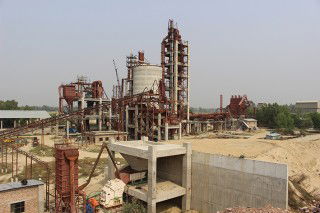Cemex UK is launching its Biodiversity Net Gain (BNG) offering to the industry, to help support organisations achieve their own Biodiversity Net Gain requirements following the changes to UK legislation.
BNG is an approach that aims to ensure future UK developments create a positive lasting impact on our natural environment by implementing a minimum target for new developments to achieve a 10 per cent uplift in the biodiversity of a site. Cemex has created a dedicated BNG service in response to the new legislation, which utilises its access to an established portfolio of sites alongside its considerable expertise gained from a long-standing history in nature recovery, land restoration, and enhancing biodiversity across its sites for the benefit of the natural environment.
Steve Redwood, land development and property director for Cemex, says, “Our Biodiversity Net Gain offering can help organisations who are new to biodiversity enhancement projects, those who may not have the inhouse skills or knowledge, and companies working with sites where biodiversity net gain targets will be difficult or costly to achieve.
“Cemex’s Biodiversity Net Gain service will help guide businesses through the entire lifecycle approach from initial assessment to unit purchase and long-term habitat management with no further input required, ensuring a hassle-free approach to the management and realisation of biodiversity net gain. For developers, Cemex’s offer will help to deliver biodiversity net gain without the pain; that may otherwise be associated with challenging or difficult to deliver sites.”
To achieve the 10 per cent increase in biodiversity, organisations will need to conduct a ‘Biodiversity Baseline Assessment’ of a site before any work starts. This will measure the existing biodiversity of a site using the Defra Biodiversity Metric (currently Biodiversity Metric 4.0). Developers will then be required to demonstrate a 10 per cent increase in biodiversity units compared to this baseline.
As well as demonstrating how the development will achieve a 10% increase in biodiversity units, companies will also need to show how the biodiversity units will be maintained for at least 30 years. The information submitted to the Local Planning Authority (LPA) must therefore, also contain a management and monitoring plan to ensure that habitats are established properly and that they deliver the long-term benefits to the environment that the introduction of BNG is intended to deliver.
